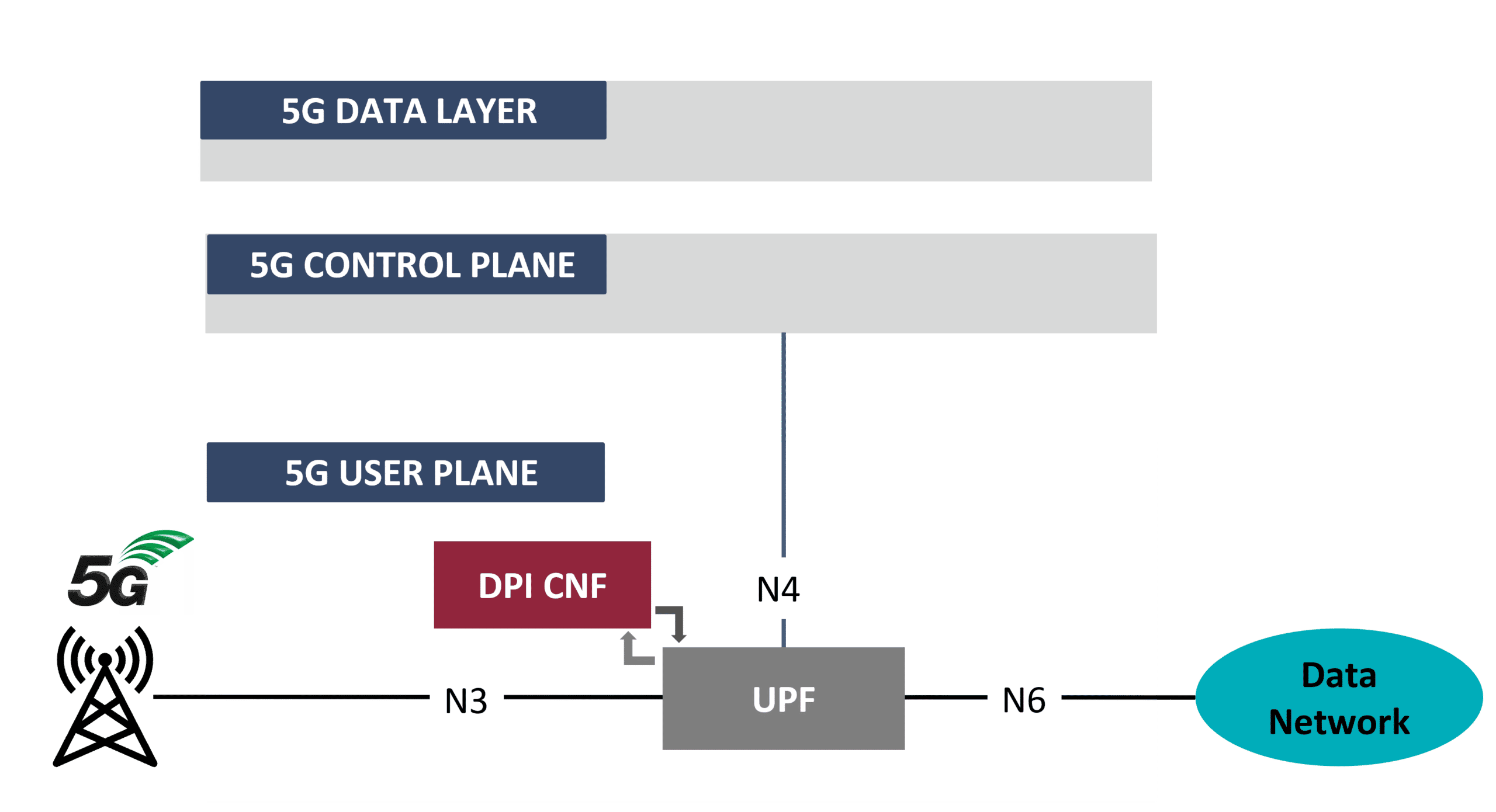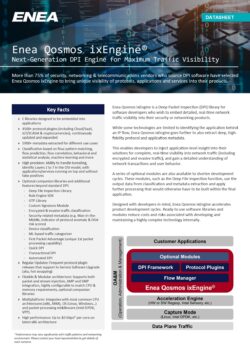5G UPF: The Key Enabler of the New 5G Edge
In 5G, the control and user (data) planes are split (Control & User Plane Separation – CUPS) and deployed in a new Service Based Architecture (SBA). This provides the flexibility to deliver user plane functionality at the edge as well as the network core. And the User Plane Function (UPF) can be co-located with local and central data centers at both locations.
This enables multi-access edge computing (MEC), which delivers resources at the edge to support new low-latency, ultra-reliable, and mass-volume 5G applications. It also enables the application-specific, end-to-end assembly of connectivity and computing resources across a shared, multi-tenant 5G infrastructure (network slicing). In other words, the UPF is the prime enabler of new 5G applications and customer-specific edge services.

5G UPF: Pivotal Responsibilities
The 5G UPF is responsible for:
- Radio Access Network (RAN)/Data Network (DN) interconnect
- Packet inspection & application detection
- Packet routing and data forwarding
- QoS management & usage reporting
It must deliver these services under extreme throughput conditions, and it has to be 100% stable to meet ultra-reliable connectivity requirements. It also has to be as close to 100% accurate in application identification as possible for effective network slicing and orchestration of network functions.
However, application classification is a highly complex and resource-intensive process. It has become even more complicated with the increased use of encryption. In addition, the protocol signatures used in application classification must be continuously updated, making it difficult to maintain accuracy in application awareness for the UPF.
The 5G UPF Challenge
Maintain application awareness without impacting UPF performance and stability. A logical solution is to leverage 5G’s service-based architecture to offload application classification from the UPF. However, if application identification is offloaded from the UPF controller, application ID (AppID) propagation is difficult.
The Solution: The Enea Qosmos DPI CNF for 5G UPF
Enea overcomes this obstacle with the Enea Qosmos ixEngine®, a traffic analytics and next-generation Deep Packet Inspection (NG DPI) engine. Application classification and AppID generation can be offloaded to Enea Qosmos ixEngine, which is deployed as a containerized (or cloud-native) network function (CNF), fitting seamlessly into a cloud-native 5G SBA. This solution protects UPF stability and performance while delivering application identification with a level of accuracy and throughput that can only be provided by a commercial-grade DPI engine.
Accuracy and granularity in application identification is essential for tailoring connectivity, security and computing resources to particular user needs.

Advantages of Enea Qosmos ixEngine Next-Gen DPI for 5G User Plane Function (5G UPF)
- Most accurate application classification on the market
- Broadest protocol/application coverage in the industry (5500+ protocol signatures)
- Unique coverage of IoT/IIoT, M2M/SCADA and Cloud/SaaS apps
- Expertise in encrypted/evasive traffic coverage
- First Packet Advantage for accurate classification from the 1st packet
- CNF form factor for cloud-native 5G SBA architectures

Benefits of the The Enea Qosmos DPI CNF for 5G UPF Solutions
- Protects the performance and reliability of the UPF
- Enables better customer experience and the development of new services through more effective and adaptable slicing
- Accelerates time to market by offloading a highly complex technology
- Eliminates the need to maintain DPI technology in-house
DATASHEET
Enea Qosmos ixEngine: Next-Generation DPI Engine for Maximum Traffic Visibility
